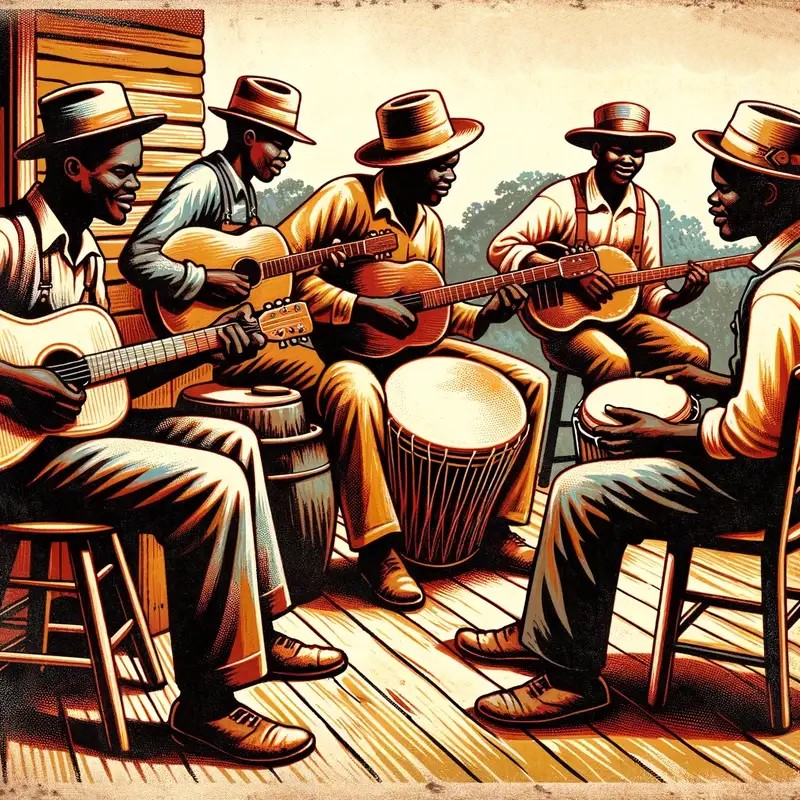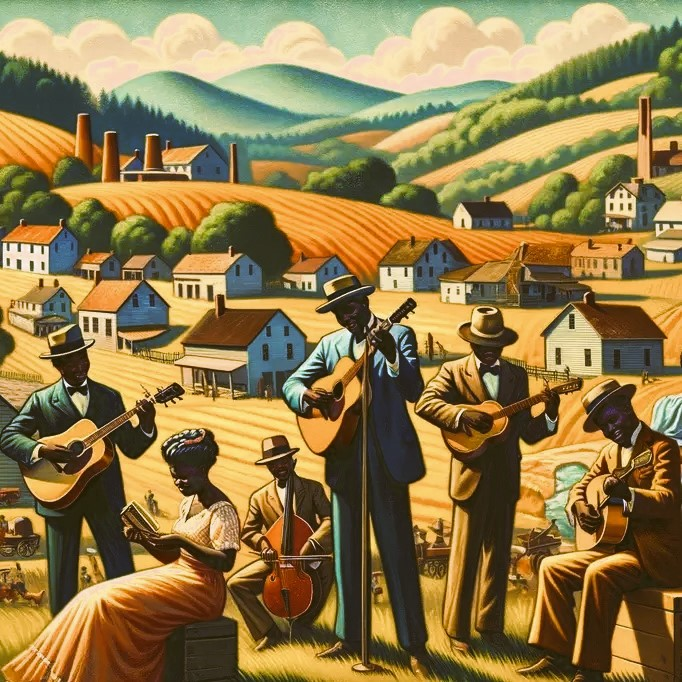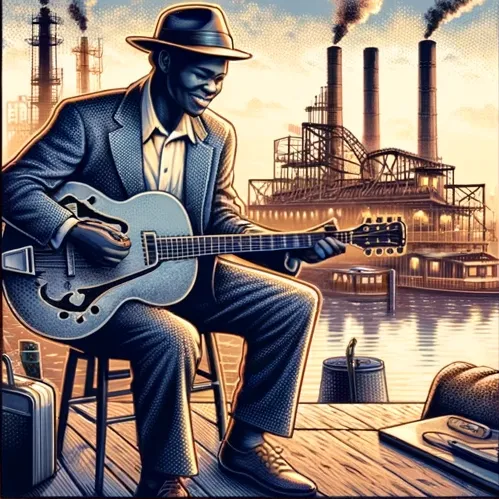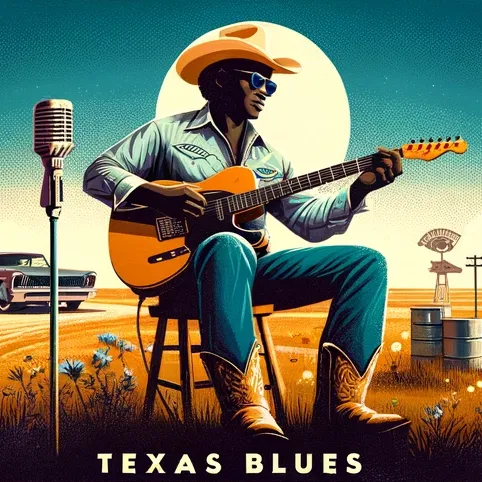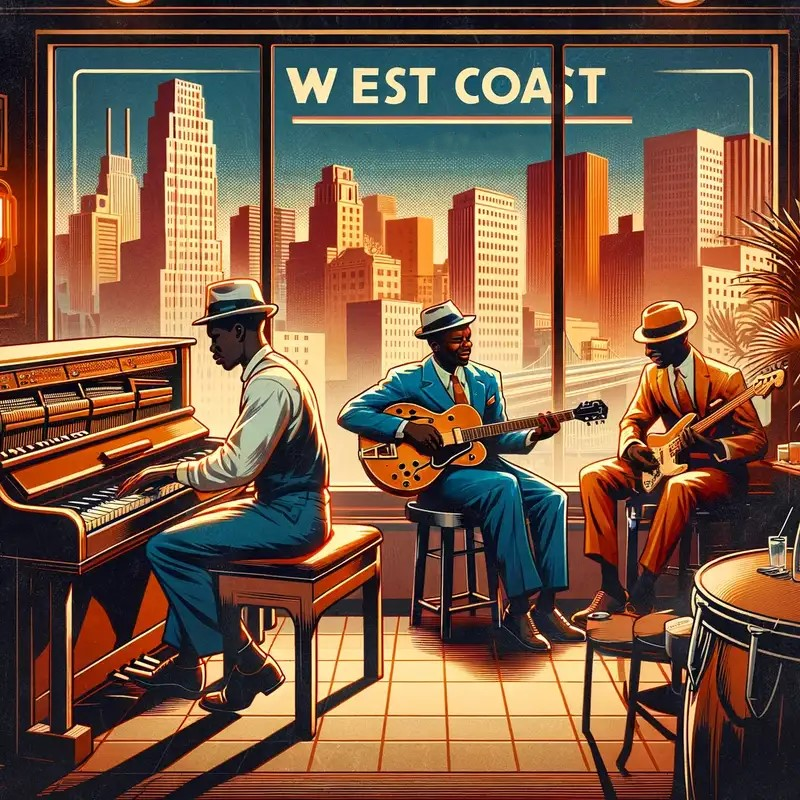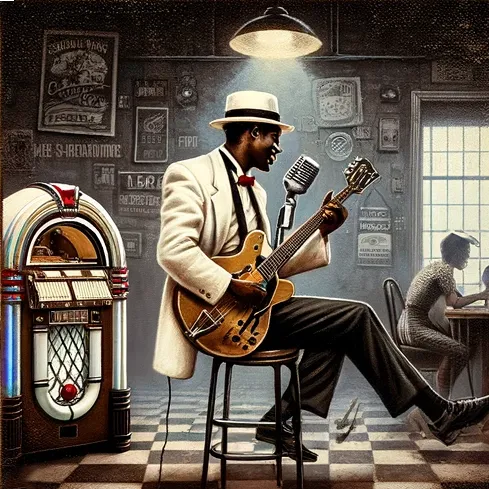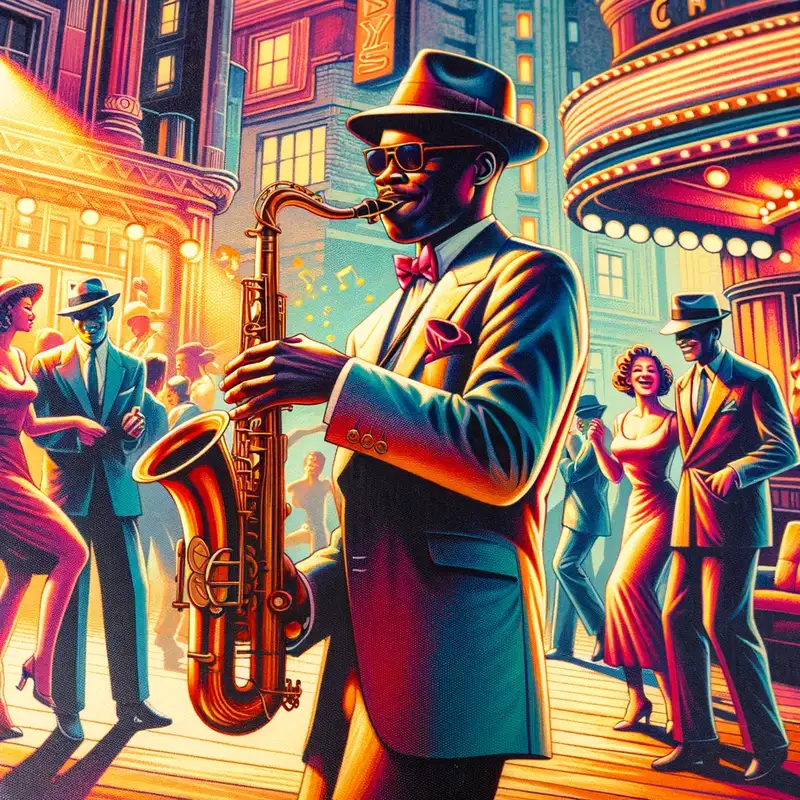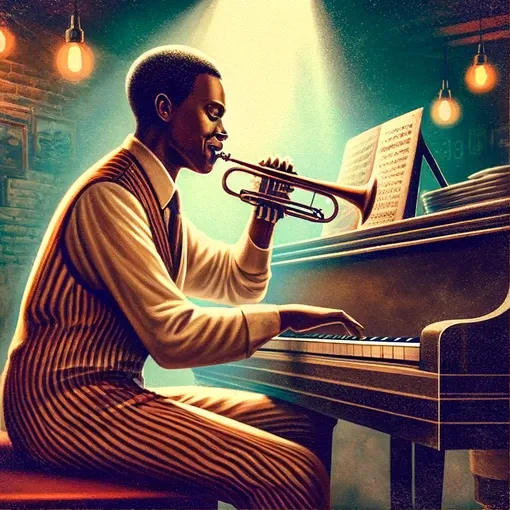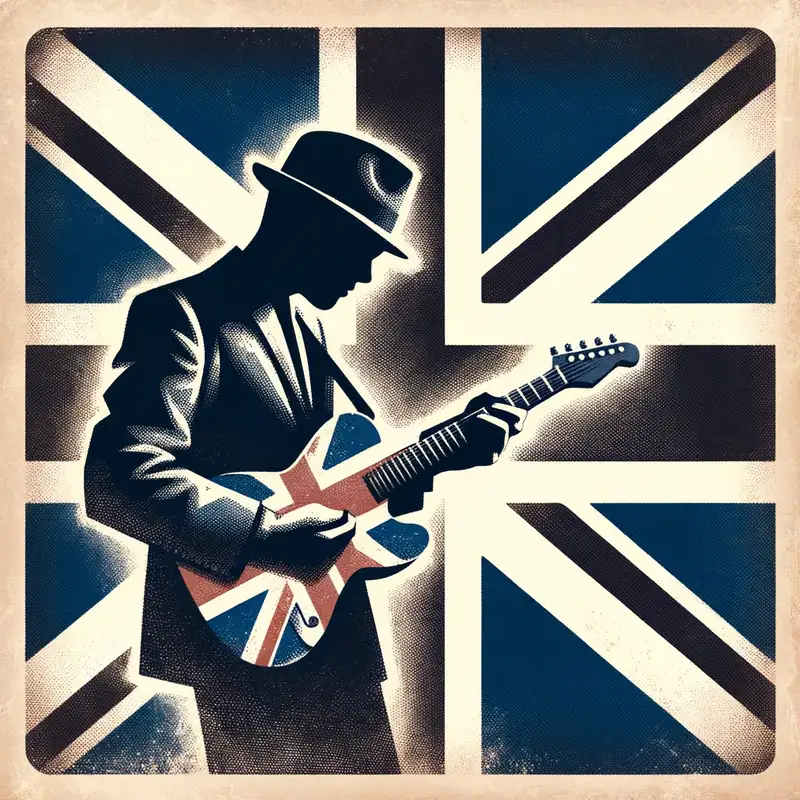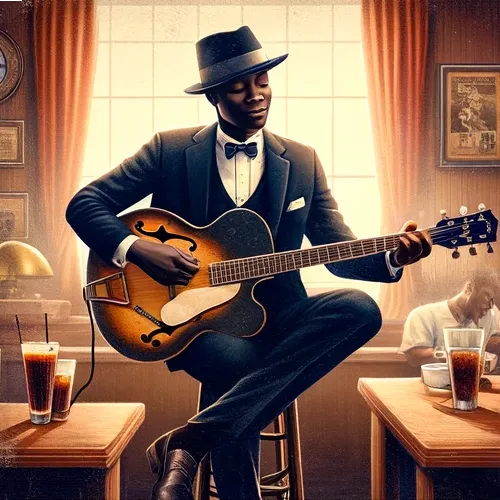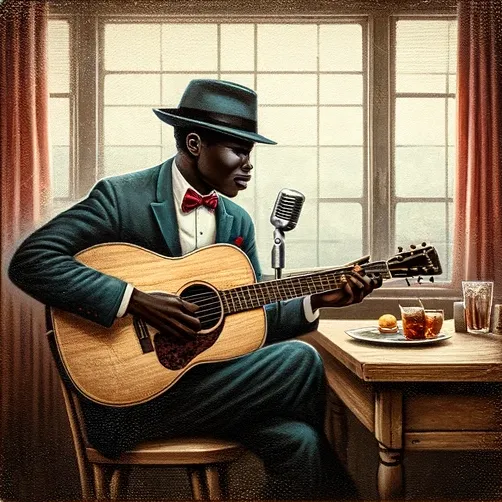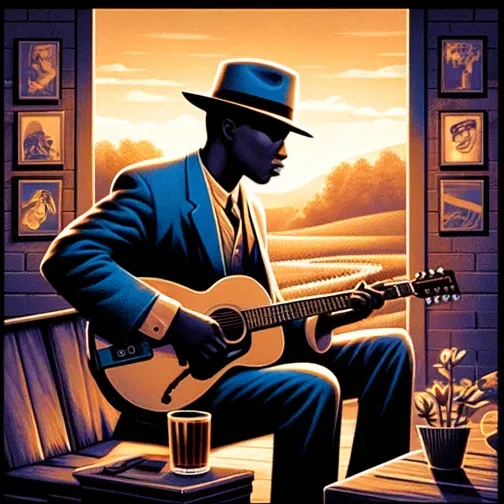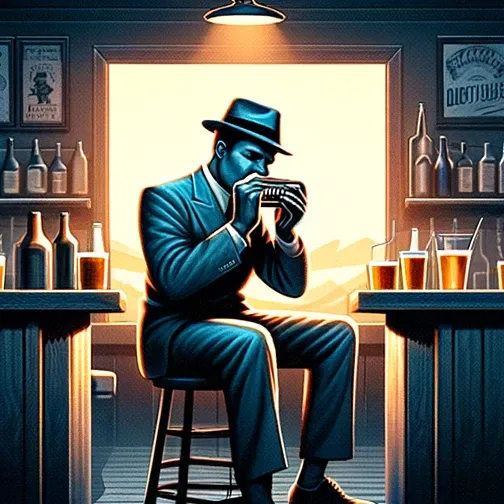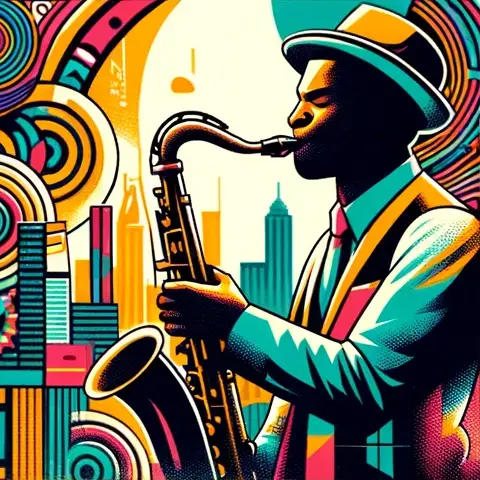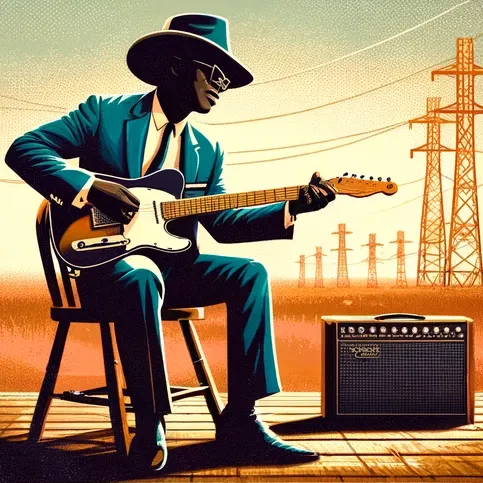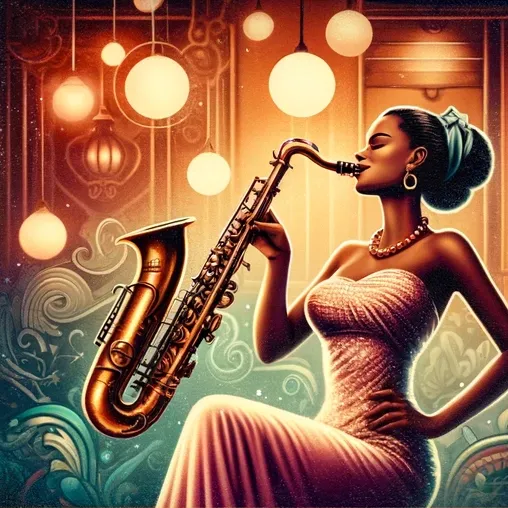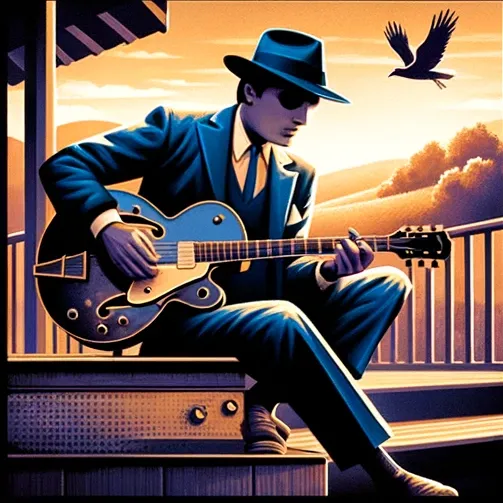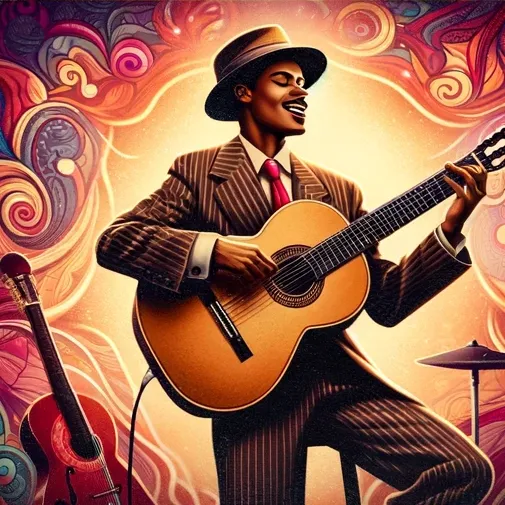Blues
The Blues, with its raw emotion and deep roots in African-American history, stands as one of the most influential genres in the world of music.
Table of Contents
Regional Developments & Styles
Blues has given rise to many subgenres over the years. Below are some of the key subgenres of blues music:
Origins
African Roots
Work Songs & Field Hollers: The roots of the blues can be found in the songs of enslaved Africans working in fields and plantations. The rhythmic work songs, accompanied by clapping and stomping, synchronized group activities. Field hollers, which were solo calls or laments, conveyed emotions and were often free in form.
Spirituals: As Christianity spread among enslaved populations, religious spirituals became a prominent form of musical expression. These were not just songs of worship but also coded messages and symbols of resistance and hope.
Drumming and Banjo: Drums played a significant role in African music but were often banned by slave owners fearing their use in communication or revolt. The banjo, an instrument with African origins, also made its mark during this period.
Post-Emancipation & the Birth of Blues
Reconstruction Era and Beyond: After the Civil War, the socio-economic condition of African Americans, especially in the South, remained tough. It was against this backdrop of segregation, racial violence, and economic hardship that the blues began to emerge as a distinct genre.
Traveling Musicians: Many early blues musicians were itinerants, traveling from town to town, playing at juke joints, bars, and street corners. Their music began to reflect a blend of personal stories and the shared struggles of Black communities.
Early Recordings: The late 1910s and 1920s saw the first blues recordings. Mamie Smith’s 1920 recording “Crazy Blues” is often cited as the first blues record. This era marked the commercial recognition of blues and its widespread popularity.
Delta Blues
Originating in the Mississippi Delta, this is perhaps one of the most iconic subgenres of blues. It often features solo artists using acoustic guitars and harmonicas. Notable artists include Robert Johnson, Charley Patton, and Son House.
Chicago Blues
Developed in Chicago, this subgenre is characterized by the use of electric guitars, bass, drums, and harmonica. Artists like Muddy Waters and Howlin’ Wolf are prominent figures in Chicago Blues.
Texas Blues
Coming out of Texas, this style is often faster and incorporates more swing. Artists like Stevie Ray Vaughan and Lightnin’ Hopkins are well-known in this subgenre.
Piedmont Blues
Originating from the southeastern United States, particularly the Appalachian region, Piedmont Blues focuses on fingerpicking techniques. Blind Willie McTell and Rev. Gary Davis are examples of artists who specialized in this style.
West Coast Blues
This blues style combines elements of Texas blues and Chicago blues but adds more complex arrangements and jazz-influences. Lowell Fulson and Charles Brown are artists known for this style.
Juke Joint Blues
This style is named for the juke joints where it was commonly played. It’s a more primitive, raw form of blues, usually played with makeshift instruments. It has a rhythmic and danceable quality.
Hill Country Blues
Originating in North Mississippi, this subgenre emphasizes rhythm and groove over melody and harmony. Artists like R.L. Burnside and Junior Kimbrough are associated with this style.
Jump Blues
This style, which laid the foundation for Rock ‘n’ Roll, is characterized by up-tempo beats and horn sections. Big Joe Turner and Louis Jordan were important figures in Jump Blues.
Boogie-Woogie
Not to be confused with the piano style!
Boogie-Woogie as a blues subgenre is characterized by a strong, fast or upbeat tempo. It often employs a walking bassline and is meant to get people dancing.
British Blues
In the 1960s, British musicians started adapting American blues styles, often electrifying the traditional setups. Artists like Eric Clapton and bands like Fleetwood Mac.
Swamp Blues
This subgenre originated in the Louisiana bayou region and incorporates elements of Cajun and Creole music. Slim Harpo and Lightnin’ Slim are two key artists in this style, which often uses slower tempos and darker, more introspective themes.
Acoustic Blues
This is a broad category that includes early blues styles that primarily use acoustic instruments like the guitar, piano, or harmonica. It’s a catch-all term for non-electric blues, encompassing Delta, Piedmont, and other regional styles.
Electric Blues
The Great Migration saw a significant number of African Americans move from the rural South to urban centers in the North. With urbanization, the acoustic blues started to electrify. Cities like Chicago became hubs for this electric blues revolution, with Muddy Waters and Howlin’ Wolf leading the charge.
Country Blues
This is another broad category that includes many early blues styles that were developed in rural settings. It can include acoustic and electric forms and generally focuses on raw, emotive expressions.
Modern Electric Blues
This term is often used to describe contemporary blues music that uses electric instrumentation but also incorporates elements from other genres like rock, soul, and R&B.
Blues Rock
Though more of a subgenre of rock than blues, blues-rock blends elements of blues and rock music, featuring blues scales and rhythms but often using the electric guitar in a way that’s characteristic of rock music. Artists like Jimi Hendrix and bands like ZZ Top fall under this category.
Harmonica Blues
Focusing on the harmonica, or “blues harp,” this subgenre can be part of various other blues styles but is distinctive because of its focus on the harmonica as the main instrument. Artists like Little Walter and Sonny Boy Williamson are important figures here.
Funk Blues
This is a fusion genre that blends elements of blues with rhythmic and harmonic traits from funk music. The style is danceable and often features complex grooves.
Jazz Blues
Another fusion genre, Jazz Blues, combines the harmonic and melodic complexity of jazz with the emotional expressiveness of blues. Many traditional jazz compositions have a ‘bluesy’ character, and many artists move fluidly between jazz and blues.
Latin Blues
This subgenre fuses blues with elements of Latin music, featuring rhythms like the bossa nova or samba.
Characteristics
- 12-Bar Structure: One of the defining characteristics of many blues songs is the 12-bar format, involving three chords.
- AAB Pattern: Lyrically, traditional blues often follows an AAB pattern, where the first line is repeated, followed by a rhyming second line.
- Blue Notes: These are notes sung or played at a slightly lower pitch than standard for expressive purposes.
- Call and Response: A significant feature borrowed from African music, where a lead singer’s call is answered by a chorus or instrument.
Influence on Other Genres
The Blues is the cornerstone of a plethora of musical genres:
- Rock: Early rock musicians like Elvis Presley and Chuck Berry drew heavily from blues patterns and rhythms.
- Jazz: Jazz musicians often incorporated the 12-bar blues structure and blue notes into their compositions.
- Soul & Funk: Artists like James Brown and Aretha Franklin took the emotive vocals of the blues and paired them with gospel and jazz influences.
- Hip-hop: The lyrical storytelling and expressions of societal struggles in blues can be seen mirrored in many hip-hop tracks.
